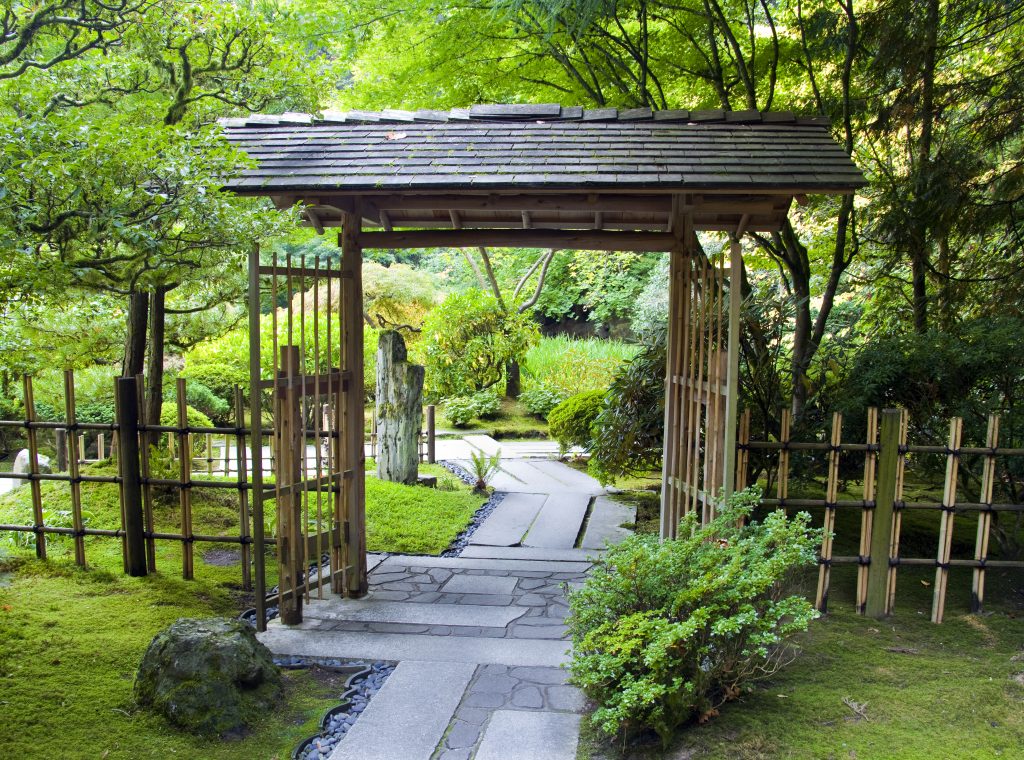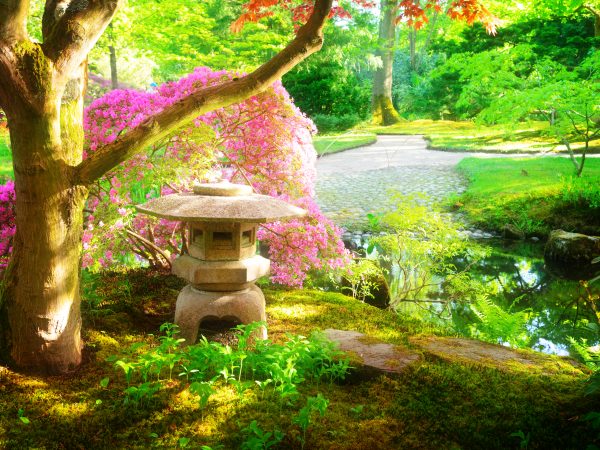Putting together the basic parts of a zen garden can help you make a calm and peaceful place to be. These carefully chosen outdoor areas are meant to make you feel peaceful and calm, giving you a peaceful break from your busy life. To produce a feeling of unity and inner peace, Japanese zen gardens use things like sand, rocks, pebbles, plants, moving water, or walkways. A zen garden is all about bringing together natural elements in a way that works well together and helps people feel more connected to nature. By putting these things in a zen garden in a way that makes you feel calm and aware, the garden becomes a place where you can relax and think. Adding these basic elements to your garden, no matter how big or small it is, will make it a peaceful haven where you can find comfort and peace in the middle of the chaos of daily life.
Essential Elements of a Zen Garden
In a zen garden, you can find peace and quiet in an area that respects the natural world. It gives you a feeling of peace, calm, and quiet, making it a great place to relax and think. If you want your outdoor place to feel truly zen, there are five important things you should include in your garden plan. Natural scenery, water features, traditional elements, local plants, and a feeling of isolation are some of these elements. By adding these important parts, you can make a zen garden that helps you connect with nature more deeply and feel less stressed. It will give you a place to escape the chaos of everyday life and find peace within.

Larger Rocks
Bigger rocks are important for a zen garden because they represent mountains and islands and look beautiful. These rocks are put in the yard in a way that makes it feel balanced and in tune with nature.
The bigger rocks in a zen garden are not only there to look nice; they are also useful. They give the room an artistic feature that makes it more interesting to look at. In addition, they can be used to edge gardens, make paths, and give the impression of being enclosed.
Having bigger rocks in a zen garden helps to create a peaceful and natural scene. They give us a sense of security and grounding and tell us of how mountains and islands are strong and beautiful. By adding these things to the yard plan, we can feel more connected to nature and calm.
By adding bigger rocks to your zen garden, you can make a place that not only shows the spirit of nature but also gives you a place to relax and think. Adding bigger rocks is important for creating a sense of calm and peace, whether you want to make a traditional zen garden or just add some zen-inspired elements to your outdoor area.
Smaller Rocks and Gravel
Adding smaller rocks and soil to a Zen garden is an important part of making it feel calm and balanced. These parts are very important to the general look of the garden and help create the peaceful atmosphere that Zen gardens are known for.
Smaller rocks are put in a Zen garden in a way that looks like natural rock shapes. They are put together to look like mountains, rivers, or islands, making a small scene that is nice to look at and relaxing. Following the ideas of Zen thought, these rocks give the area a sense of balance and peace.
In Zen gardening, on the other hand, gravel is used to cover the ground. It has more than one use. For starters, it looks like water because the cut designs look like waves or swirls. This creates a sense of flow and movement, which makes the meditation experience better. Second, the feel and sound of dirt underfoot can be very relaxing, which makes the garden experience more complete.
River rocks, pebbles, and small boulders are all types of rocks that are often used in Zen gardening. The different sizes and colors of these rocks make it possible to arrange them in artistic ways that look natural and beautiful. Gravel is usually made of broken up rock or stone that has been crushed. It can be very fine or very thick.
Ornamental Grasses and Plants
Decorative grasses and plants are important for making a Zen yard that looks good and works well with nature. They paint the room with color, give it depth, and make it feel calm. Here are some great choices for plants and greens that will look nice in your Zen garden:
Miscanthus Grass: This tall grass has beautiful flowers that can make your garden more interesting. Its airy texture and soft color give the impression of flow and movement, which fits well with the Zen style as a whole.
For example, Pampas grass has big, fluffy blades and branches that bend gracefully. It is a beautiful and elegant plant that makes a statement. It gives the yard structure and softness with its fluffy look.
Festuca glauca is a small grass that is valued for its bright blue-gray leaves. It is also known as Blue Fescue. It is easy to care for and doesn’t take up much space, so it’s a great choice for bringing color and complexity to your Zen garden.
Bamboo: Japanese gardens have always had bamboo because of its beautifully rising canes and rustling sound. It adds interest to the vertical space, making it feel enclosed and private while still keeping the space open and airy.
Japanese maples are beautiful trees with leaves that are brightly colored in shades of orange, red, and green. They add a touch of class and a splash of color to your Zen garden with their soft, flowing leaves.
Moss: moss is a traditional part of Japanese gardening. It makes the ground or rocks look lush and soft. Its vibrant green color and cushion-like appearance give a sense of tranquility and a connection with nature.
By incorporating these ornamental grasses and plants into your Zen garden, you can create a space that is visually appealing, textured, and inviting. Their colors, shapes, and textures will enhance the overall sense of peace and tranquility, allowing you to fully immerse yourself in the beauty of nature.
Water Feature
One of the essential elements in creating a tranquil and relaxing oasis in your zen garden is incorporating water features. Whether it is a small pond, a cascading fountain, or a gently flowing stream, water can bring a sense of peace and serenity to any outdoor space.
In a zen garden design, water features play a significant role in enhancing the overall atmosphere of relaxation. The sound of flowing water can have a soothing effect, transporting you into a state of calmness and tranquility. It creates a meditative space where you can escape the stresses of daily life and find solace in the beauty of nature.
The sight and sound of water flowing can also create a sense of harmony and balance within the garden. It adds a dynamic element that complements the stillness and simplicity of other natural elements, such as rocks, plants, and grasses. The constant movement of water symbolizes the ever-changing nature of life, reminding us to embrace flexibility and flow with the rhythm of the universe.
When choosing a water feature for your zen garden, consider the size and space available. A small pond surrounded by pebbles and native plants can create a sense of enclosure and provide a focal point for contemplation. A simple fountain can add elegance and a touch of Zen aesthetic, while a gently meandering stream can create a sense of discovery and exploration.
Incorporating a water feature into your zen garden design is a crucial element in creating a relaxing oasis where you can connect with nature and find inner peace. It adds a layer of tranquility and serenity that enhances the overall ambiance, making your garden a haven of calm and rejuvenation.
Decorative Elements
In addition to natural elements, decorative elements can be incorporated into a Zen garden to add personality and character. However, it’s essential to choose these elements carefully to ensure they complement the overall design and don’t overshadow the natural elements.
Ornaments and accessories are excellent choices to enhance the beauty and tranquility of a Zen garden. Lanterns can provide soft, ambient lighting in the evenings, creating a serene atmosphere. Opt for stone lanterns to maintain the traditional Japanese aesthetic. Statues of Buddhist figures or animals, such as Buddha or cranes, can bring a sense of spiritual and symbolic meaning to the garden.
When selecting these decorative elements, it’s crucial to consider their size, placement, and visual impact. They should blend harmoniously with the natural landscape, seamlessly integrating with the rocks, plants, and water features. Avoid choosing extravagant or flashy ornaments that could overshadow the sense of peace and simplicity that a Zen garden strives to create.
By thoughtfully incorporating ornaments and accessories, such as lanterns and statues, you can add a personal touch to your Zen garden. These elements can infuse the space with personality and character, while still maintaining the essence of tranquility and connection with nature that defines this garden style.
Traditional Elements of a Japanese Zen Garden
A Japanese Zen Garden is characterized by its traditional elements, carefully chosen and positioned to create a sense of tranquility and harmony. The most prominent feature in a Zen garden is the carefully placed rocks. These rocks, known as “ishi,” serve as the foundation and focal point of the garden. They are meticulously arranged in patterns to represent natural landscapes such as mountains and islands.
Another essential element is the use of bridges. These bridges, often made of wood or stone, symbolize the transition from the everyday world to the spiritual realm. They provide a pathway for contemplation and reflection as one moves through the garden.
Lanterns are also integral to a Zen garden. Stone lanterns, or “tōrō,” are carefully positioned to provide soft, ambient lighting in the evenings. They create a serene atmosphere and symbolize the guiding light toward enlightenment.
Water features, such as small ponds or streams, are commonly found in Zen gardens. The gentle sound of flowing water promotes relaxation and creates a sense of harmony with nature. These water features are strategically placed to mimic natural landscapes and create a soothing, meditative space.

Conclusion
In conclusion, adding the right finishing touches to a Zen garden design is essential for creating a truly peaceful and serene outdoor space. By incorporating plants, ornaments, and accessories, you can further enhance the overall aesthetic and foster a sense of tranquility.
By paying attention to these finishing touches and carefully selecting the right plants, ornaments, and accessories, you can transform your garden into a truly meditative and enchanting oasis. Experience the beauty of nature and the calming presence of a Zen garden, and let the stresses of daily life melt away in this soothing and rejuvenating space.

